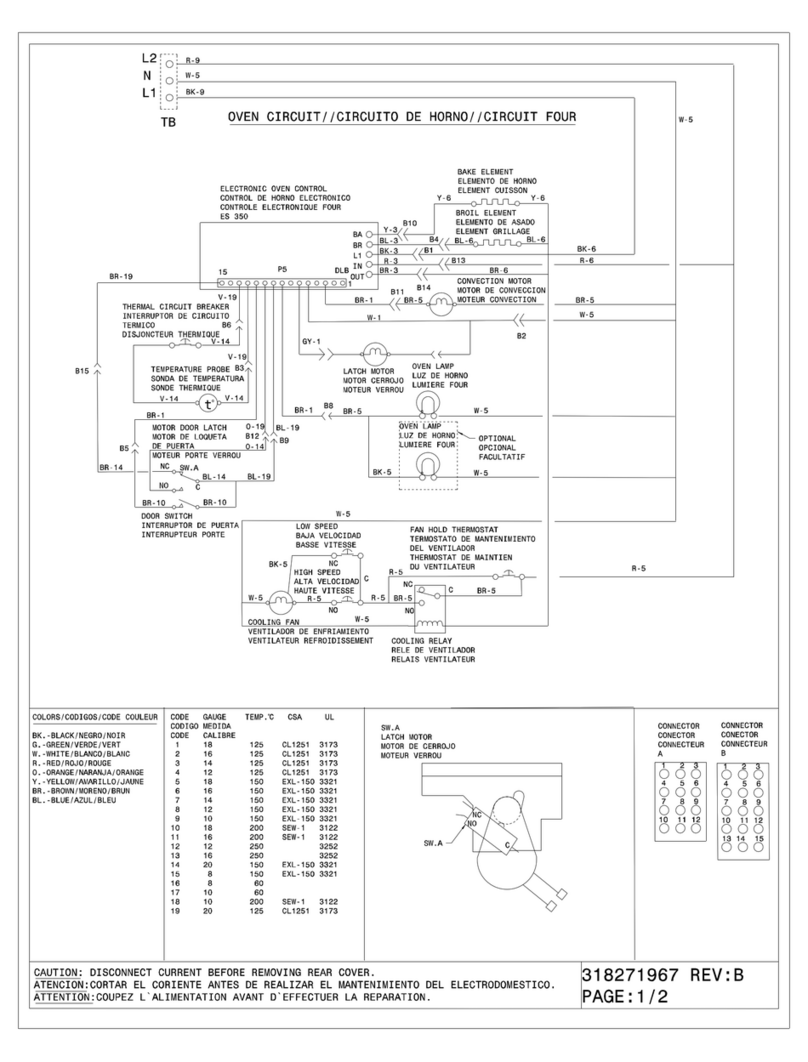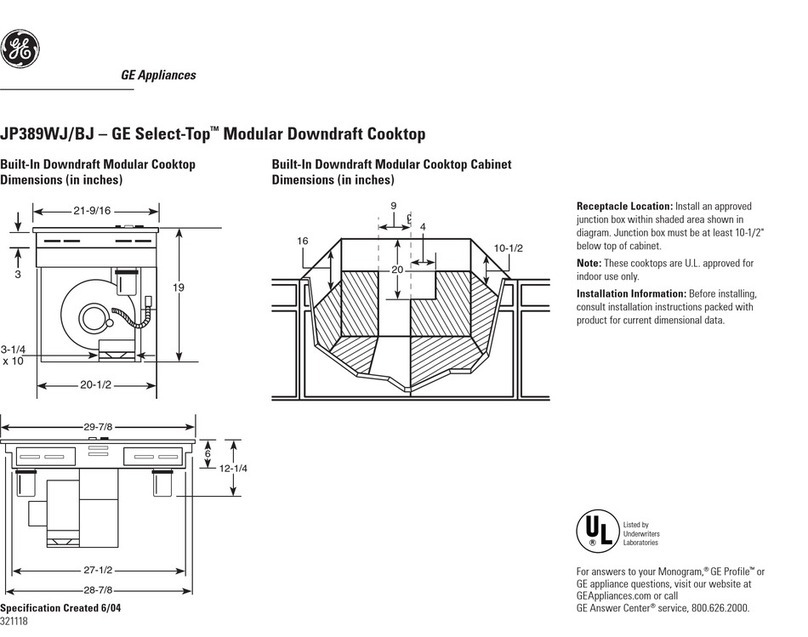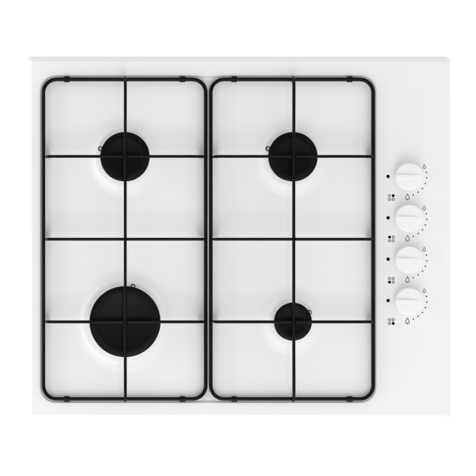
9
MANUTENZIONE
Un’accurata manutenzione garantisce un
buon funzionamento ed un buon rendimento
nel tempo.
Una cura particolare va rivolta al ltro anti-
grasso.
Nei modelli SLTC61, SLTC65, SLT66 e SLTC68
la rimozione del ltro avviene in primo luogo
aprendo il pannello frontale (dis. 6) , succes-
sivamente operando sull’apposita maniglia
del ltro e ruotandolo verso l’esterno. Il ltro
viene inserito nell’operazione inversa.
E’ necessario mantenere pulito il canale rac-
colta olio posto sotto al ltro antigrasso, la
rimozione avviene svitando i due pomelli di
ssaggio e slandolo dalla sede come dimo-
stra il dis. 17.
Per il prodotto SLTC62 occorre aprire il pan-
nello frontale in vetro ruotandolo verso l’alto
(Dis.12), successivamente slare i due ltri
dalla sede come dimostra il Dis. 12 A, i ltri
vengono inseriti nell’operazione inversa.
Dopo 30 ore di esercizio della cappa, la
pulsantiera segnalerà la saturazione del
ltro mediante l’illuminazione simultanea
degli indicatori di velocità; Per il reset pre-
mere il tasto temporizzatore .
La pulizia del ltro antigrasso può essere
eseguita a mano o in lavastoviglie.
La pulizia avviene in rapporto all’uso, almeno
una volta ogni due mesi.
* Nel caso d’uso dell’apparecchio in versione
ltrante, è necessario sostituire il ltro car-
bone attivo periodicamente. Il ltro carbo-
ne attivo si rimuove togliendo prima il l-
tro antigrasso, seguendo le istruzioni sopra
descritte, successivamente tirando l’apposita
linguetta in plastica del ltro carbone sgan-
ciandolo dalla sua sede. Il ltro carbone viene
inserito nell’operazione inversa. La sostitu-
zione del ltro al carbone avviene in rapporto
all’uso, almeno una volta ogni sei mesi.
Per la pulizia dell’apparecchio stesso viene
consigliato l’uso di acqua tiepida e detersivo
neutro, evitando l’uso di prodotti contenenti
abrasivi.
Modalità di funzionamento:
Nel caso siano installati due sistemi cappa-
radiocomando nello stesso locale o nelle im-
mediate vicinanze i sistemi avendo lo stesso
codice di trasmis-sione potrebbero essere
inuenzati quindi è necessario cambiare il
codice di un solo radiocomando.
ATT.: La batteria deve essere sostituita ogni
anno per garantire la portata ottimale del tra-
smettitore, per sostituire la batteria scarica
rimuovere il coperchio di plastica, togliere la
batteria in uso e inserirne una nuova rispet-
tando la polarità indicata nel contenitore. La
batteria usata deve essere smaltita negli ap-
positi contenitori.
Il prodotto è dotato di un dispositivo elettro-
nico che permette lo spegnimento automati-
co dopo quattro ore di funzionamento dal-
l’ultima operazione eseguita.
Generazione di un nuovo codice di tra-
smissione:
Il radiocomando viene fornito dalla fabbrica
con dei codici predeniti. Se si desidera una
nuova generazione di codici, occorre ese-
guire la seguente procedura: Premere con-
temporaneamente i tasti UP (+), STOP (0/1)
e DOWN (-) in modo continuo per 2 secondi,
nello stesso tempo si avrà l’accensione dei
led, succes-sivamente premere i tasti UP (+)
e DOWN (-), 3 lampeggi dei led indicheran-
no che l’operazione è stata completata. ATT:
questa operazione cancella in maniera deni-
tiva i codici preesistenti.
Apprendimento del nuovo codice di tra-
smissione:
Dopo aver cambiato il codice di trasmissio-
ne nel radiocomando, occorre far apprendere
alla centrale elettronica della cappa aspirante
il nuovo codice nel seguente modo: premere
il tasto d’emergenza (visibile dopo l’apertura
del pannello frontale) per due volte conse-
cutive in modo da togliere alimen-tazione al
prodotto e ripristinarla, da questo momento
ci sono 15 secondi di tempo per premere il
tasto luce per far si che la cappa si sin-
cronizzi con il nuovo codice.



























